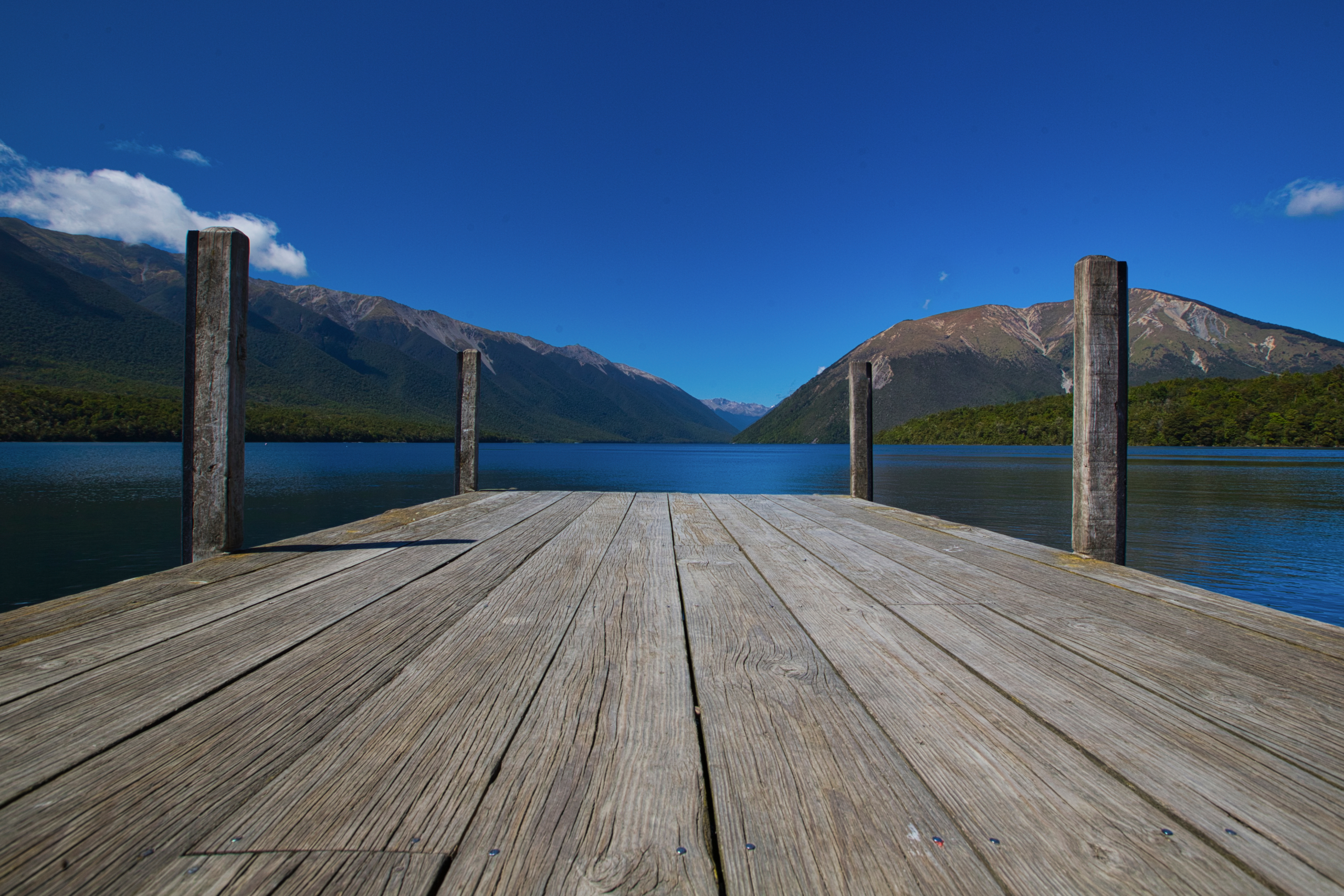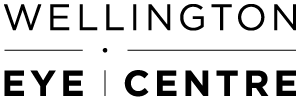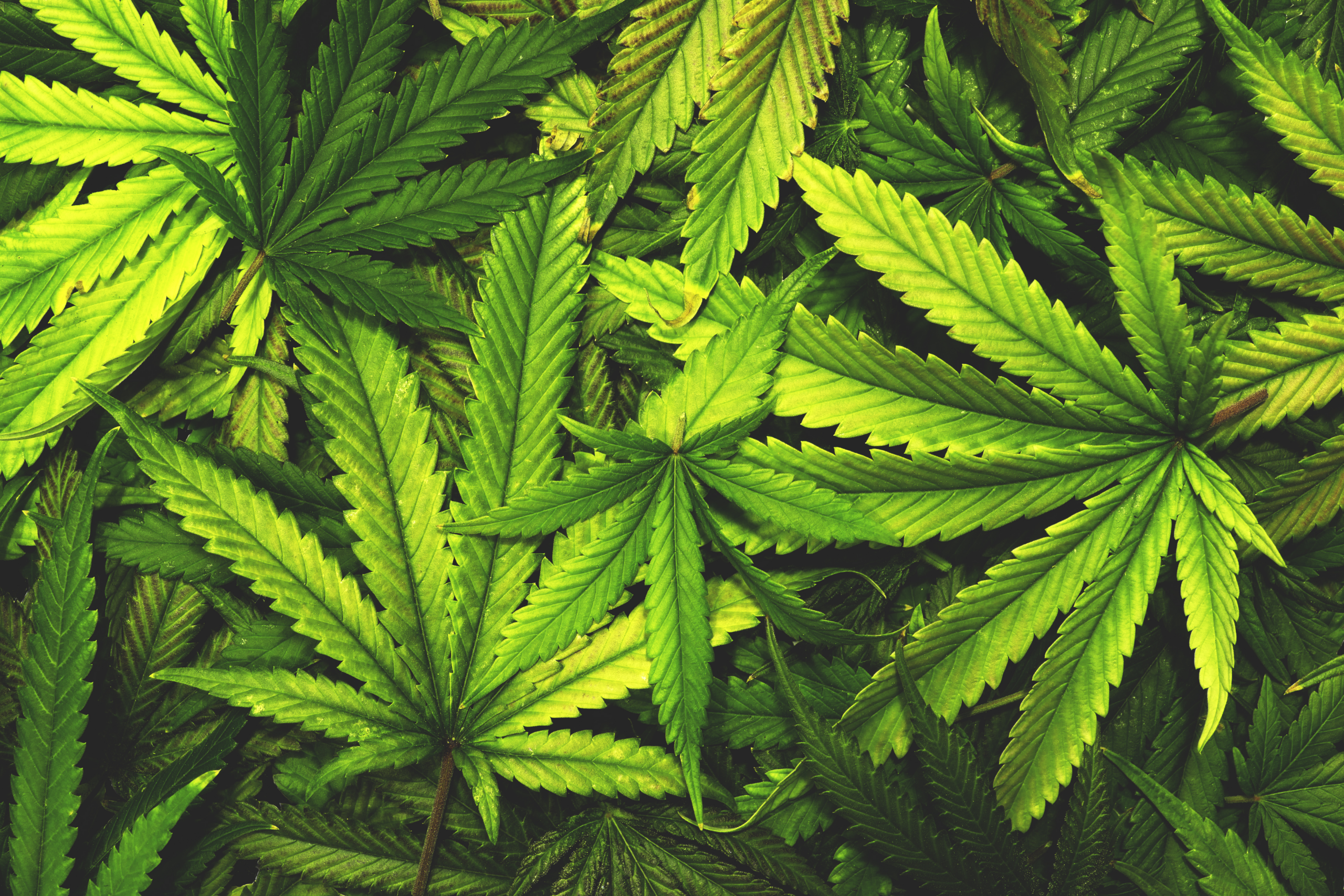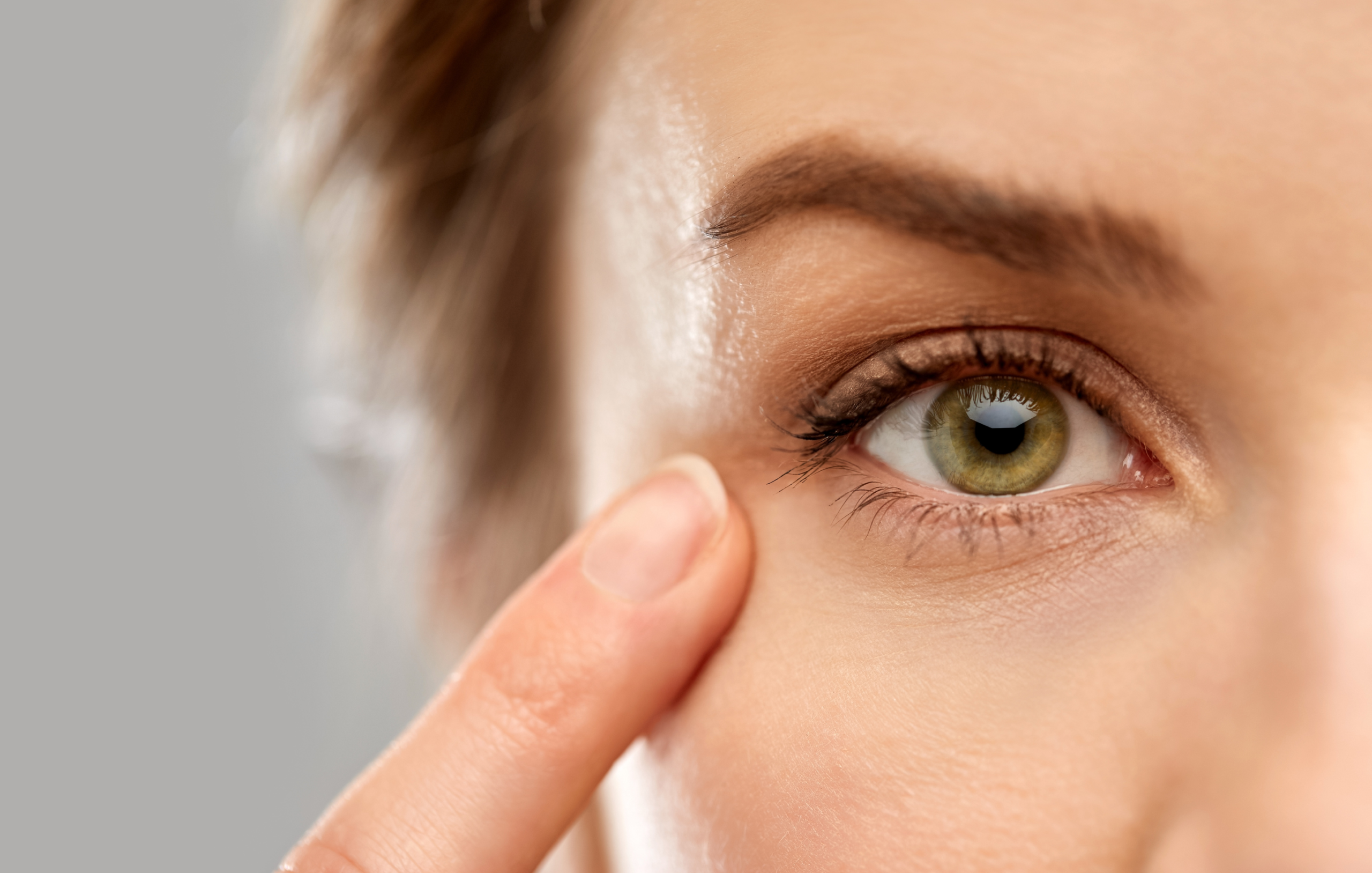You’ve probably heard of red light therapy before – whether it’s through your skincare-crazed friend, or from Temu ads on Facebook. The futuristic-looking treatment typically features a white mask with red LED bulbs.
Although it’s commonly associated with skincare, recent studies have shown that Low-Level Light Therapy/LLLT (a form of red light therapy) can alleviate dry eyes. So how does this technology work, and is it safe?
The Origin of Light Therapy
The use of light for therapeutic purposes has its roots in ancient Egypt, India, and Greece, where natural sunlight was used to treat skin diseases.
Modern phototherapy was developed in the late 19th century by Dr Niels Finsen. Finsen used phototherapy (both UV and red light) to treat scarring caused by tuberculosis and smallpox. This won him the Nobel Prize for Medicine in 1903.
For the first half of the 20th century, UV light was used to treat a variety of conditions such as asthma, anemia, and chest infections in children.
Over time, the ability to manipulate light for therapeutic use improved. Light-Emitting Diodes (LEDs) were invented in 1962, and low-level laser therapy in 1967. These were significant advancements, as they filtered out carcinogenic UV rays.
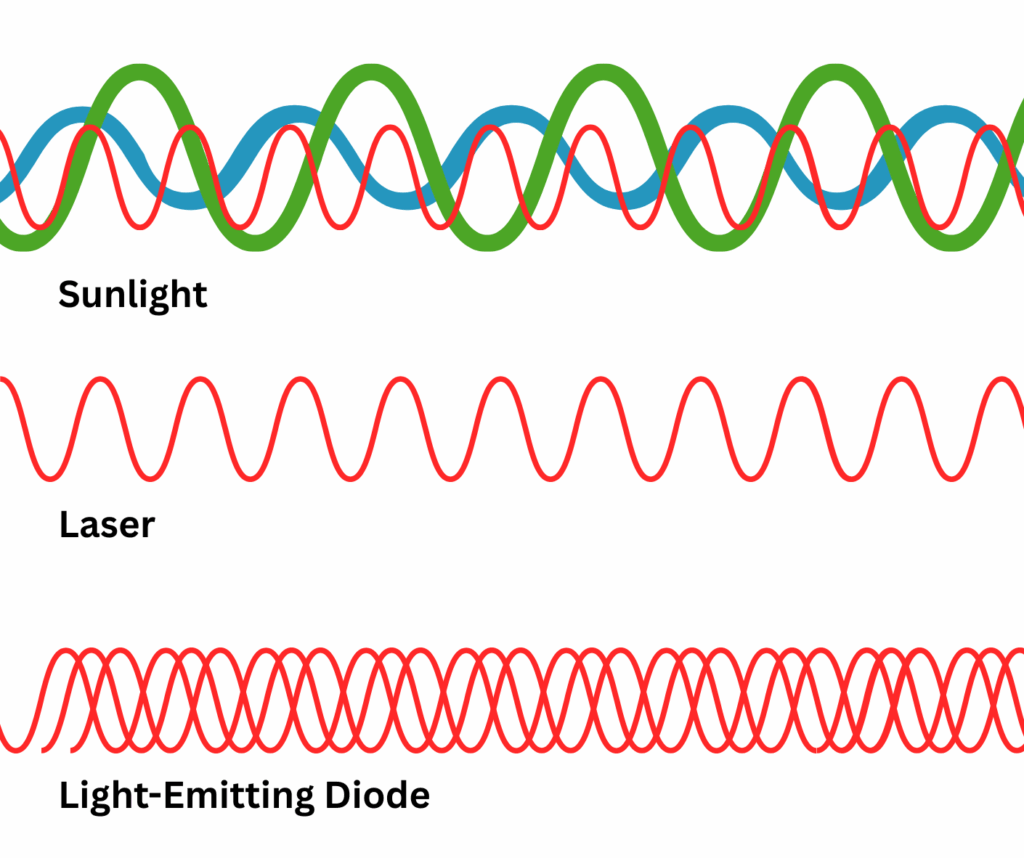
The figure above represents the wavelengths of sunlight, lasers, and LEDs. As you can see, sunlight is made up of a combination of different wavelengths. Lasers are made up of a single wavelength that is spatially and temporally synchronized. LEDs are very similar, but their wavelengths are not quite synchronized. LLLT can be produced by lasers or LEDs. In ophthalmology we use LEDs for LLLT.
What is Low-Level Light Therapy?
LLLT is a non-invasive treatment that utilises specific wavelengths of light to stimulate healing processes in tissues. It works by penetrating the skin and tissues to a cellular level. LLLT increases ATP production in the mitochondria which promotes blood flow, reduces inflammation, and supports cellular regeneration.
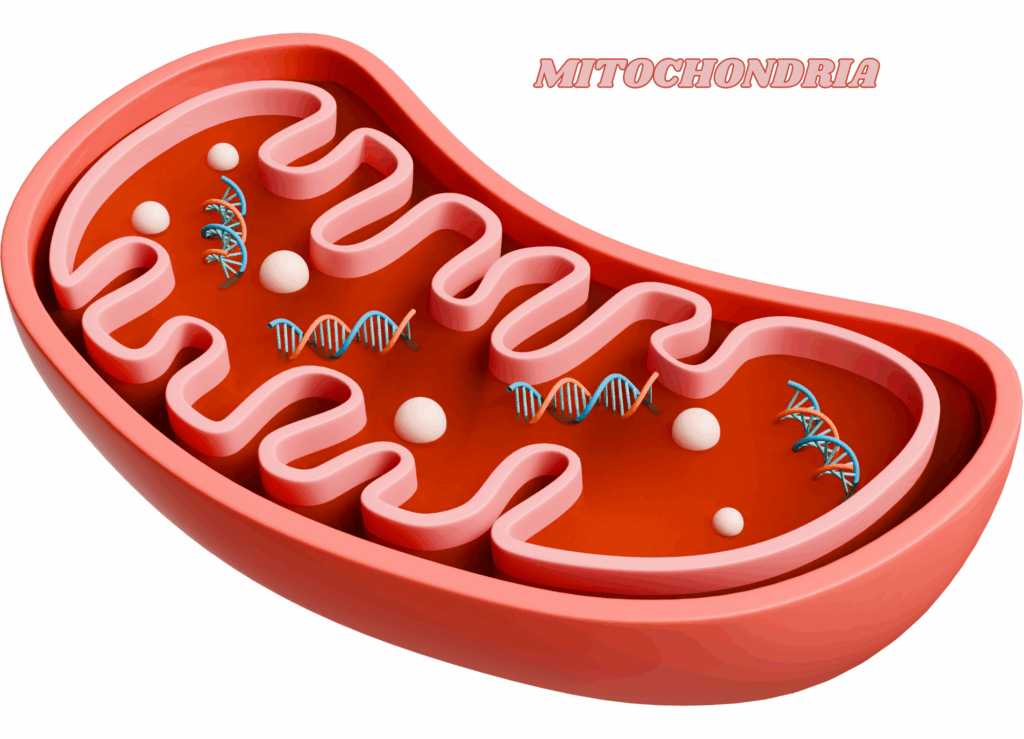
Types of Low-Level Light Therapy
There are three main types of LLLT, each defined by the type of wavelength emitted.
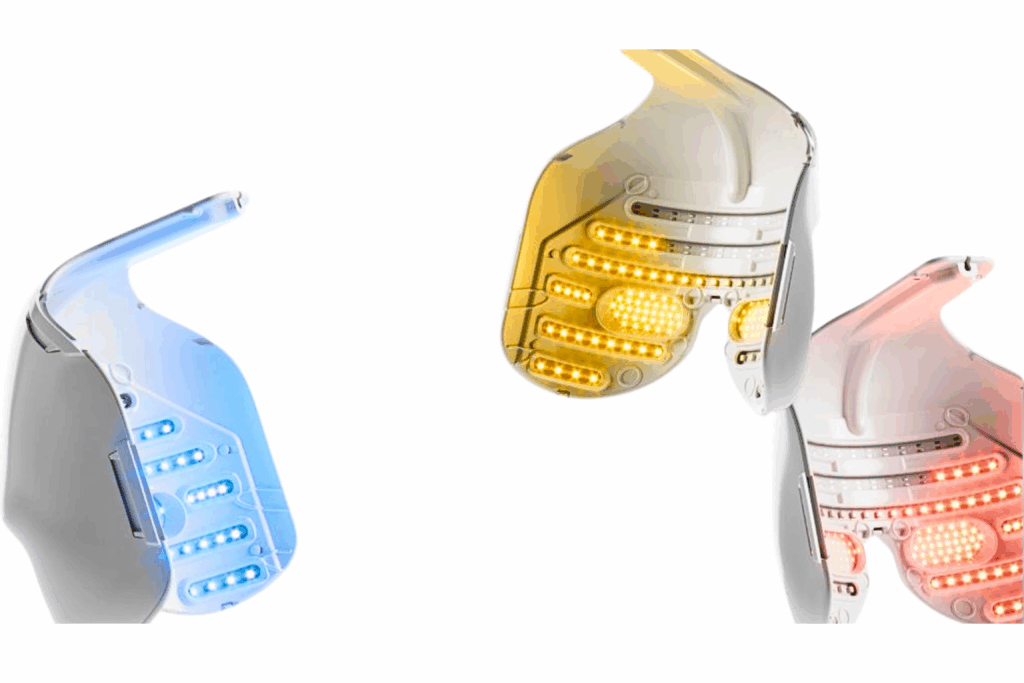
- Red Light Therapy (around 630 nanometers): Addresses conditions such as Dry Eye Disease, Meibomian Gland Dysfunction, Chalazions, Sjögren’s Syndrome, Styes, and Blepharitis. It is also used in dermatology to promote skin renewal.
- Blue Light Therapy (around 400-490 nanometers): Treats conditions such as Blepharitis, Rosacea, and Demodex (mites). Blue light kills gram-positive bacteria by damaging their cell walls. In dermatology, it helps with sebaceous follicles, redness, and inflamed skin.
- Yellow Light Therapy (around 590 nanometers): Helps dampen the inflammatory response and reduce swelling. This is useful after invasive procedures, such as Blepharoplasties.
How Does Low-Level Light Therapy Help Dry Eyes?
Dry eyes occur when there is insufficient tear production or poor-quality tears. This can lead to irritation, burning, or a gritty feeling in the eyes. LLLT has been shown to:
- Stimulate the Meibomian glands: These glands, located in your eyelids, produce the oily layer of your tears that prevents evaporation. LLLT can help restore function to these glands, improving the quality of the tear film.
- Reduce inflammation: Dry eyes are often accompanied by inflammation on the surface of the eyes and eyelids. LLLT can help reduce this inflammation, leading to greater comfort.
- Increase tear production: By promoting healing and cellular regeneration, LLLT may help improve tear production, reducing dryness and irritation.
How is Low-Level Light Therapy Used for Dry Eyes?
During the treatment, a mask that emits red or blue light is positioned over the eyes for a specific period, usually around 15 minutes. The light targets the surface of the eyes and the surrounding tissues, stimulating the Meibomian glands and other related areas.
- Frequency: Treatment sessions may be done 2-10 days apart, depending on your doctor’s recommendation.
- Comfort: Most patients find the treatment to be painless, though some may experience mild warmth or a slight sensation during the procedure.
What to Expect During Treatment
- Pre-treatment: Ensure makeup, eyelash extensions, contact lenses, piercings and hearing aids are removed or covered.
- Treatment session: You will be asked to sit in a comfortable chair, and the mask will be positioned over your eyes.
- Post-treatment: After the session, you may notice that your vision has a blue or green tint to it, which will wear off after a few minutes. You can resume normal activities immediately. Some patients experience improved comfort and reduced dryness after just a few sessions.
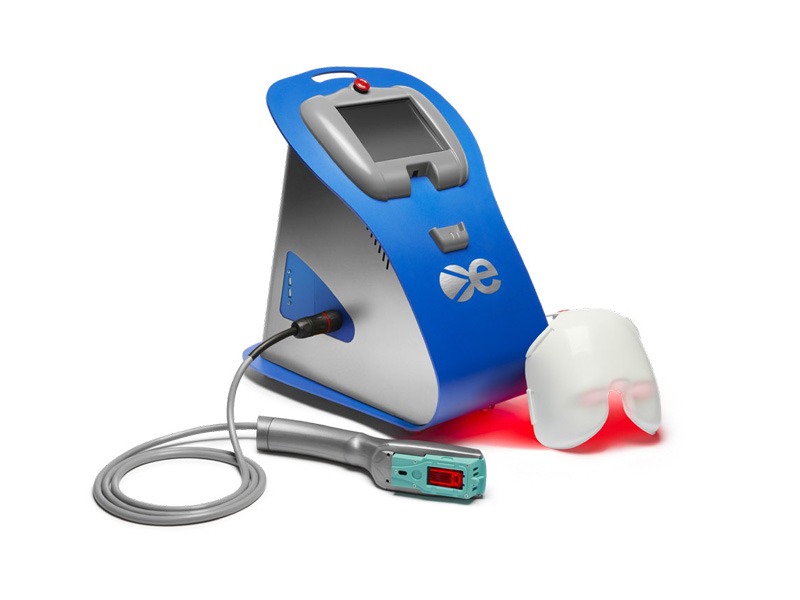
Is Low-Level Light Therapy Safe?
LLLT is generally considered safe when used as directed by a healthcare professional. It is non-invasive and does not involve the use of medications or surgical procedures. However, as with any treatment, it may not be suitable for everyone.
- Side effects: LLLT is typically well-tolerated, but some patients may experience mild dryness, light sensitivity, or temporary redness in the eyes.
- Precautions: Let your doctor know before starting treatment if you have any eye conditions (e.g., glaucoma, cataracts, or retinal disorders), a pacemaker, are pregnant, take photosensitising medications, or have photosensitive conditions such as epilepsy.
Who Can Benefit from Low-Level Light Therapy for Dry Eyes?
LLLT can be beneficial for individuals with chronic dry eye disease, especially when the condition is related to Meibomian Gland Dysfunction (MGD) or inflammation of the eyelids. It may be considered when other treatments (such as artificial tears or medications) have not provided sufficient relief.
Other Treatment Options for Dry Eyes
While LLLT may offer relief for dry eyes, it is often used in combination with other treatments, including:
- Artificial tears or lubricating eye drops
- Warm compresses to help unblock the Meibomian glands
- Eyelid hygiene (e.g., gentle cleaning of the eyelids)
- Prescription medications, such as anti-inflammatory eye drops or oral medications
- Punctal plugs to retain moisture on the eye surface
What Are the Next Steps?
If you’re considering LLLT for your dry eyes, it’s essential to consult with your eye care professional first. They can help determine if this therapy is right for you and discuss a personalised treatment plan.
If you have any further questions about dry eye or would like to discuss your symptoms and recommended treatments with our specialists, you can email or call us on 0800 733 327 to speak with a member of our team.
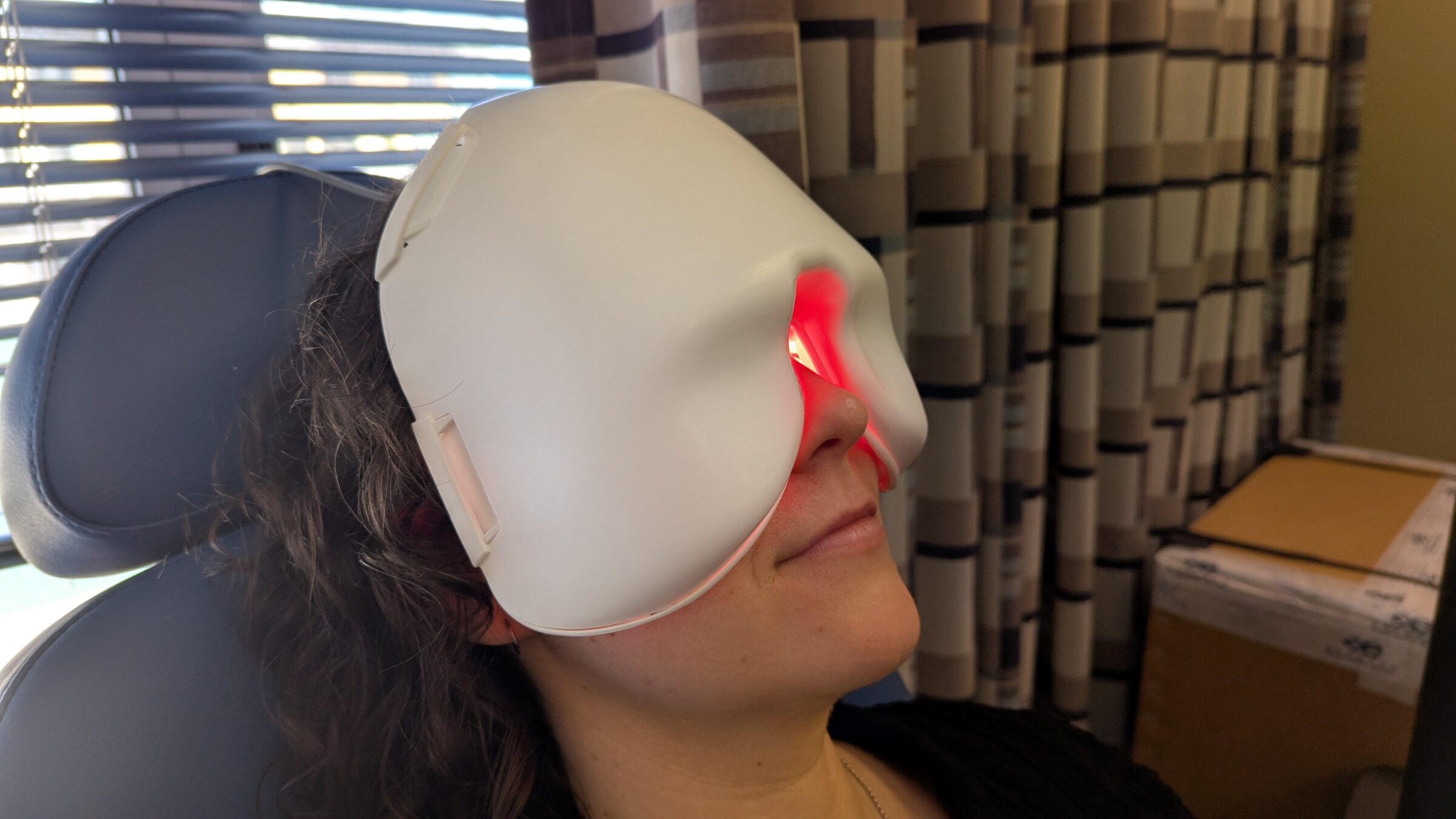
Low-Level Light Therapy for Dry Eyes

Common Medications Used in Laser Eye Surgery
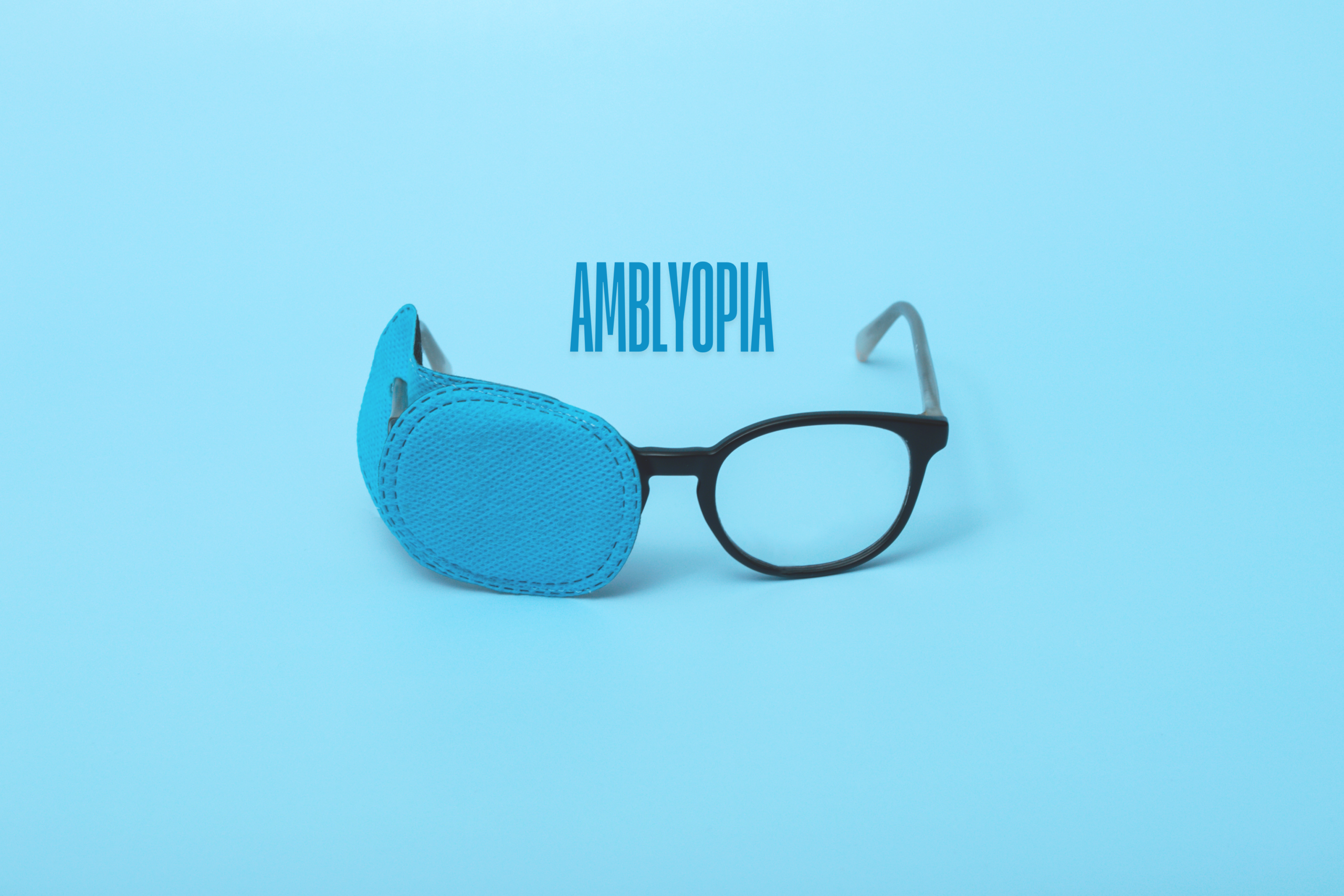
Amblyopia and Laser Eye Surgery
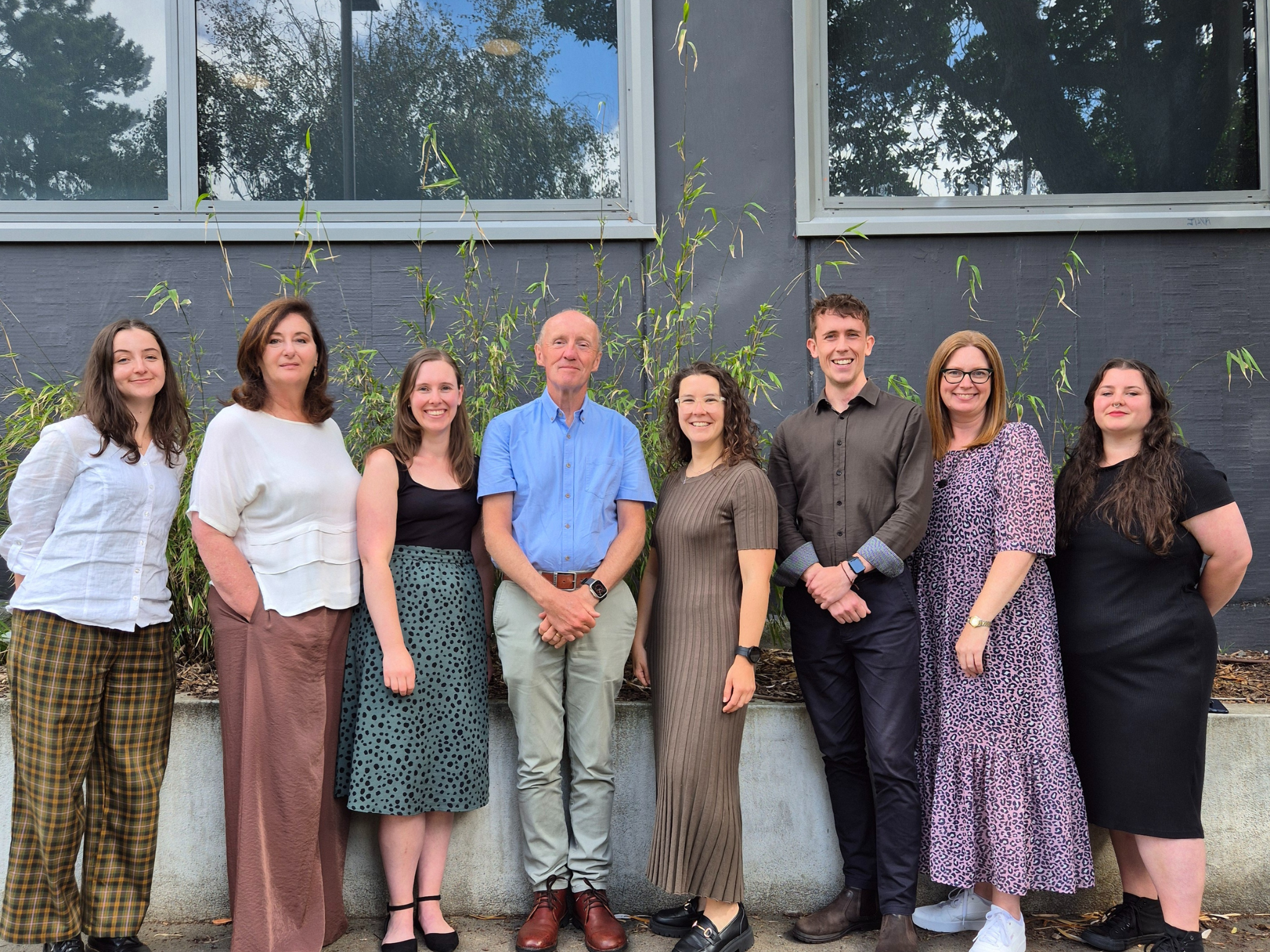
Meet The Team at the Wellington Eye Centre
